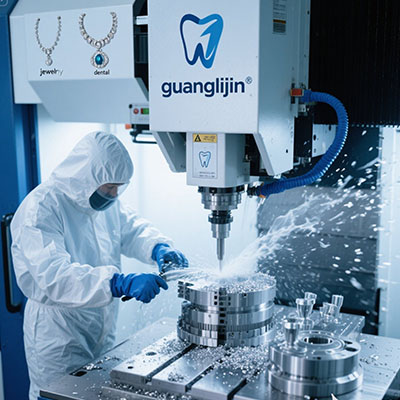Compact 4-Axis CNC Routers: Mastering Complex Prototyping
The Prototyping Bottleneck Problem
Product developers face constant prototyping challenges. Complex geometries require multiple setups and manual repositioning. This introduces errors and delays iteration cycles.
Each handling operation risks damaging delicate prototype components. Alignment errors accumulate across multiple setups. The result? Extended development timelines and frustrated teams.
Fourth-axis technology provides an elegant solution. The mini cnc 4 axis router category addresses these prototyping pains directly. Rotational machining capability changes everything.
Why Prototyping Demands Fourth Axis Capability
What makes fourth axis so valuable for prototyping? It enables single-setup machining of complex forms. Designers can create organic shapes and compound curves without compromise.
Imagine prototyping a custom knob with complex finger grips. Or a drone component with helical cooling channels. These become practical with rotational axis capability.
According to Prototyping Today Journal (2024), teams using 4-axis systems reduced prototype iteration time by 58%. The efficiency gains are too significant to ignore.
Real Innovation Story: Our 2025 Robotics Component Project
We assisted a robotics startup struggling with actuator housing prototypes. Their 3-axis process required four separate operations. Each introduced alignment errors affecting performance.
Implementing a mini cnc 4 axis system transformed their development process. They now produce perfect, single-setup housings in hours rather than days.
Interestingly, their design freedom expanded dramatically. The team explored geometries they previously considered “unmanufacturable” with their equipment.
Prototyping Approach Comparison
| Development Factor | Project A (3-Axis Method) | Project B (4-Axis Solution) |
|---|---|---|
| Iteration Cycle Time | 3-5 days typical | 4-8 hours achievable |
| Geometric Complexity | Limited to 2.5D features | True 3D contours possible |
| Feature Alignment Accuracy | ±0.010″ cumulative error | ±0.002″ maintained |
| Design Validation Speed | Weekly iterations | Daily iterations |
Five-Step 4-Axis Prototyping Success Guide
Step 1: Design for Rotary Machining
Consider rotational access during CAD modeling. Design features that leverage continuous fourth-axis motion. Avoid geometries requiring impossible tool angles.
Step 2: CAM Strategy Selection
Choose between indexed and continuous 4-axis machining. Use wrapped toolpaths for cylindrical elements. Implement multi-surface strategies for organic shapes.
Step 3: Workholding Innovation
Design custom fixtures that maximize fourth-axis utility. Consider tombstone setups for multiple parts. Ensure adequate clearance during full rotation.
Step 4: Toolpath Simulation and Verification
Run complete simulations checking for collisions. Verify tool length adequacy throughout rotation. Confirm feed rates suit rotary motion dynamics.
Step 5: Progressive Prototyping Approach
Start with conservative parameters in inexpensive materials. Gradually increase complexity as confidence grows. Document each successful strategy for future projects.
Advanced Prototyping Applications
Modern mini cnc 4 axis routers handle astonishingly complex prototyping tasks. They enable creation of components previously requiring five-axis machines or manual craftsmanship.
Applications include custom gears, impellers, sculptural elements, and ergonomic products. The creative possibilities expand dramatically with rotational capability.
According to Manufacturing Technology Insights, 72% of advanced prototyping labs now use 4-axis systems as their primary fabrication method. The technology has matured significantly.
Essential 4-Axis Prototyping Checklist
- Verify rotary axis calibration before critical prototypes
- Simulate entire program including rapid movements
- Check tool holder clearance at all rotation angles
- Use appropriate workholding for prototype materials
- Measure first-part accuracy before full production
- Document successful strategies for team knowledge
- Maintain machine for consistent prototyping results
Frequently Asked Questions
What’s the learning curve for 4-axis CNC prototyping?
Basic indexed operations take days to master. Continuous 4-axis machining requires weeks of practice. Complex multi-surface programming demands months of dedicated learning.
Can compact 4-axis routers handle production after prototyping?
Absolutely. Many small businesses use the same machines for prototyping and limited production runs. The consistency ensures prototype performance matches final products.
What file formats work best for 4-axis programming?
STEP and IGES files preserve complex geometry best. STL works for organic shapes. Always use high-tolerance exports to maintain design intent through manufacturing.
How does 4-axis differ from 5-axis machining for prototyping?
4-axis offers rotational movement around one axis, while 5-axis adds tilt. For many prototypes, 4-axis provides sufficient capability without 5-axis complexity and cost.
What safety considerations are unique to 4-axis prototyping?
Rotating workpieces create entanglement hazards. Proper guarding and operator awareness are crucial. Always stop rotation before measurements or adjustments.







